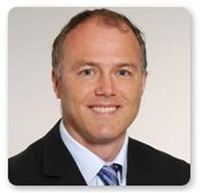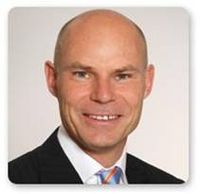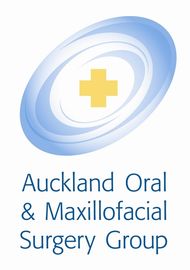Central Auckland, East Auckland, North Auckland, South Auckland, West Auckland > Private Hospitals & Specialists >
Auckland Oral and Maxillofacial Surgery Group
Private Service, Oral & Maxillofacial Surgery
Today
8:00 AM to 5:00 PM.
Description
As our name suggests, we are a group practice specialising in surgery of the mouth, face, and jaws. The following is a brief summary of the comprehensive range of oral and maxillofacial surgical procedures that we provide.
Dento-alveolar Surgery
- Removal of Teeth
- Removal of Impacted Teeth
- Transplantation of Teeth
- Apicectomy
- Placement of dental implants
- Exposure of Teeth
- Fibrotomy (Pericision)
- Frenectomy
Maxillofacial Trauma
- Fractured Teeth
- Fractures of the Mandible, Maxilla & Zygomatic Complex
- Soft Tissue Trauma
Orthognathic Surgery
- Abnormalities of the Jaw & Face
- Chin & Jaw Reconstruction
Maxillofacial Pathology including Neoplasia
TMJ
- Functional Disorders
- Internal Derangement
Salivary Gland Disorders
Soft Tissue Disorders
Pre-prosthetic Surgery
Maxillary Sinus Disorders
Oral Medicine
Consultants
-

Dr John Harrison
Oral and Maxillofacial Surgeon
-

Dr Cameron Lewis
Oral and Maxillofacial Surgeon
-

Dr Chris Sealey
Oral and Maxillofacial Surgeon
Referral Expectations
We would expect most patients to be referred by their doctor or dentist however we are happy to accept self referrals. Please call to make an appointment.
Hours
8:00 AM to 5:00 PM.
| Mon – Thu | 8:00 AM – 5:00 PM |
|---|---|
| Fri | 8:00 AM – 4:30 PM |
Services Provided
Wisdom teeth are the third molars right at the back of your mouth. They usually appear during your late teens or early twenties. If there is not enough room in your mouth they may partially erupt through the gum or not at all. This is referred to as an impacted wisdom tooth. Due to their location wisdom teeth can be difficult to clean and are more susceptible to decay, gum disease and recurrent infections. They can cause crowding of teeth and, on rare occasions, cysts and tumours develop around them. Your dentist will advise if some or all of your wisdom teeth need to be removed. Wisdom teeth will usually only be removed if your dentist believes they will be a significant compromise to your oral health. Impacted tooth extraction Your dentist may recommend extraction if you are at significantly greater risk of infection or tooth decay. Impacted teeth may be removed by your dentist or they may refer you to an oral & maxillofacial surgeon. An incision (cut) is made in your gum and access to the impacted tooth cleared by pushing aside gum tissue and, if necessary, removing some bone. The tooth is removed whole or in pieces and the gum stitched together over the hole.
Wisdom teeth are the third molars right at the back of your mouth. They usually appear during your late teens or early twenties. If there is not enough room in your mouth they may partially erupt through the gum or not at all. This is referred to as an impacted wisdom tooth. Due to their location wisdom teeth can be difficult to clean and are more susceptible to decay, gum disease and recurrent infections. They can cause crowding of teeth and, on rare occasions, cysts and tumours develop around them. Your dentist will advise if some or all of your wisdom teeth need to be removed. Wisdom teeth will usually only be removed if your dentist believes they will be a significant compromise to your oral health. Impacted tooth extraction Your dentist may recommend extraction if you are at significantly greater risk of infection or tooth decay. Impacted teeth may be removed by your dentist or they may refer you to an oral & maxillofacial surgeon. An incision (cut) is made in your gum and access to the impacted tooth cleared by pushing aside gum tissue and, if necessary, removing some bone. The tooth is removed whole or in pieces and the gum stitched together over the hole.
Wisdom teeth are the third molars right at the back of your mouth. They usually appear during your late teens or early twenties. If there is not enough room in your mouth they may partially erupt through the gum or not at all. This is referred to as an impacted wisdom tooth.
Due to their location wisdom teeth can be difficult to clean and are more susceptible to decay, gum disease and recurrent infections. They can cause crowding of teeth and, on rare occasions, cysts and tumours develop around them.
Your dentist will advise if some or all of your wisdom teeth need to be removed. Wisdom teeth will usually only be removed if your dentist believes they will be a significant compromise to your oral health.
Impacted tooth extraction
Your dentist may recommend extraction if you are at significantly greater risk of infection or tooth decay. Impacted teeth may be removed by your dentist or they may refer you to an oral & maxillofacial surgeon.
An incision (cut) is made in your gum and access to the impacted tooth cleared by pushing aside gum tissue and, if necessary, removing some bone. The tooth is removed whole or in pieces and the gum stitched together over the hole.
Gum tissue at the site of the implant is opened up to expose the bone. The bone is drilled and a titanium implant is inserted where the root of your tooth had been. Once the bone and gum has healed (3-6 months), the post is attached to the implant and the crown is placed over the post and cemented into place.
Gum tissue at the site of the implant is opened up to expose the bone. The bone is drilled and a titanium implant is inserted where the root of your tooth had been. Once the bone and gum has healed (3-6 months), the post is attached to the implant and the crown is placed over the post and cemented into place.
Gum tissue at the site of the implant is opened up to expose the bone. The bone is drilled and a titanium implant is inserted where the root of your tooth had been. Once the bone and gum has healed (3-6 months), the post is attached to the implant and the crown is placed over the post and cemented into place.
Arthroscopic: several small incisions (cuts) are made over the joint in front of the ear. A small telescopic instrument with a tiny camera attached (arthroscope) is inserted, allowing the surgeon a view of the joint. Small instruments can be inserted into the other cuts to free up the joint by e.g. removing adhesions and scarring, or repositioning a disc. Arthroplasty (open surgery): an incision is made in front of the ear, giving the surgeon access to reconstruct the joint by e.g. smoothing joint surfaces, repairing discs or removing diseased tissue. If a joint replacement is necessary, a second incision under the angle of the jaw may be required.
Arthroscopic: several small incisions (cuts) are made over the joint in front of the ear. A small telescopic instrument with a tiny camera attached (arthroscope) is inserted, allowing the surgeon a view of the joint. Small instruments can be inserted into the other cuts to free up the joint by e.g. removing adhesions and scarring, or repositioning a disc. Arthroplasty (open surgery): an incision is made in front of the ear, giving the surgeon access to reconstruct the joint by e.g. smoothing joint surfaces, repairing discs or removing diseased tissue. If a joint replacement is necessary, a second incision under the angle of the jaw may be required.
Arthroscopic: several small incisions (cuts) are made over the joint in front of the ear. A small telescopic instrument with a tiny camera attached (arthroscope) is inserted, allowing the surgeon a view of the joint. Small instruments can be inserted into the other cuts to free up the joint by e.g. removing adhesions and scarring, or repositioning a disc.
Arthroplasty (open surgery): an incision is made in front of the ear, giving the surgeon access to reconstruct the joint by e.g. smoothing joint surfaces, repairing discs or removing diseased tissue. If a joint replacement is necessary, a second incision under the angle of the jaw may be required.
Orthognathic surgery corrects conditions of the jaws and face related to structure and growth. It is also used in the treatment of congenital conditions like cleft palate. The surgery can involve bones being cut, re-aligned and held in place with plates and screws. It is usually offered in connection with orthodontic treatment.
Orthognathic surgery corrects conditions of the jaws and face related to structure and growth. It is also used in the treatment of congenital conditions like cleft palate. The surgery can involve bones being cut, re-aligned and held in place with plates and screws. It is usually offered in connection with orthodontic treatment.
Orthognathic surgery corrects conditions of the jaws and face related to structure and growth. It is also used in the treatment of congenital conditions like cleft palate. The surgery can involve bones being cut, re-aligned and held in place with plates and screws. It is usually offered in connection with orthodontic treatment.
A cyst is a cavity filled with fluid or air that typically presents as a painless swelling inside your mouth. Removal may be performed under local or general anaesthetic. Jaw tumours may be benign or malignant and typical symptoms include swelling, pain, tenderness and tooth movement.
A cyst is a cavity filled with fluid or air that typically presents as a painless swelling inside your mouth. Removal may be performed under local or general anaesthetic. Jaw tumours may be benign or malignant and typical symptoms include swelling, pain, tenderness and tooth movement.
A cyst is a cavity filled with fluid or air that typically presents as a painless swelling inside your mouth. Removal may be performed under local or general anaesthetic. Jaw tumours may be benign or malignant and typical symptoms include swelling, pain, tenderness and tooth movement.
Public Transport
Britomart Transport Centre 10-15 minute walk from Quay Park Health.
Bus-stops within 1-2 minute walk of Quay Park Health.
Please phone your local transport provider or visit the Auckland Transport Journey Planner website which will help you to plan your journey.
Parking
Pay & Display patient parking in driveway.
Pay & Display parking in Beach Road.
Pay & Display parking in surrounding side streets (Mahuhu & Te Taou Crescents).
Wilson covered parking on Tapora Street (behind Quay Park Health building).
Pharmacy

Contact Details
8:00 AM to 5:00 PM.
-
Phone
(09) 369 5566
Email
Street Address
Ground Floor
Quay Park Health Building
68 Beach Road
Auckland 1010
Postal Address
PO Box 68447
Newton
Auckland 1145
Was this page helpful?
This page was last updated at 11:09AM on June 12, 2024. This information is reviewed and edited by Auckland Oral and Maxillofacial Surgery Group.

